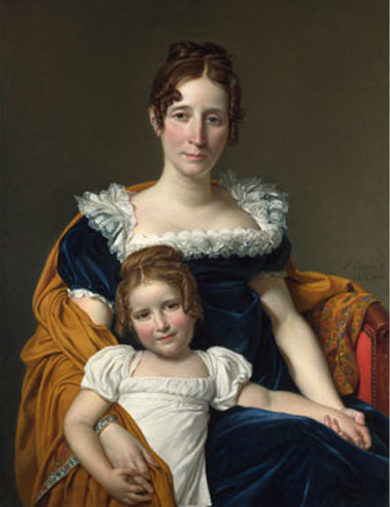Andrew Graham-Dixon on David's Portrait of the Vicomtesse Vilain XIIII and Her Daughter, 'a masterpiece of frank and unaffected tenderness'
Shortly before losing the battle of Waterloo, Napoleon visited the painter Jacques-Louis David in his studio. He arrived in a dark mood which was not lightened by contemplation of the vast canvas to which David had devoted 14 years of his considerable but intermittent energy, Leonidas at Thermopylae. Napoleon had never liked the painting because he considered its subject, the stoical acceptance of a military defeat, an unlucky one. But he produced an elegant compliment none the less: ''Continue, David, to illustrate France with your works. I hope that copies of this picture will soon be hung in military academies; it will remind cadets of the virtues of their calling.'' The two men parted amicably, and never met again.
Shortly afterwards, David linked his own fate inextricably with that of Napoleon by subscribing to the acte additionnel, which denied the right of the Bourbon monarchy to rule France. Following Napoleon's defeat and the Bourbon restoration, David was made to feel the full force of the new and precarious regime's displeasure. All those who had supported the acte additionnel, it was announced, ''are exiled in perpetuity from the kingdom which they must leave within one month, under penalty of Article 32 of the penal code.'' He left Paris at once and chose to spend the remainder of his life in the uneventful obscurity of Brussels.
Once the most celebrated painter of France's most turbulent years, once the intimate of Robespierre, once the pageant- master of the Revolution and creator of the cults of its martyrs Marat and Lepelletier, once the propagandist of the First Empire and the unrivalled chef d'ecole of French Neo-Classicism, David would occupy much of his last eight...


